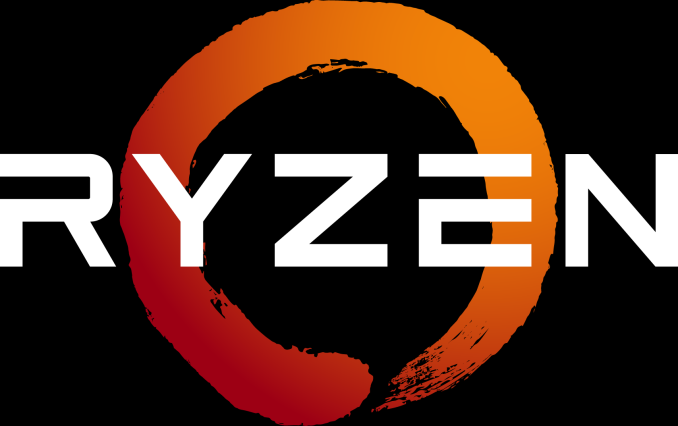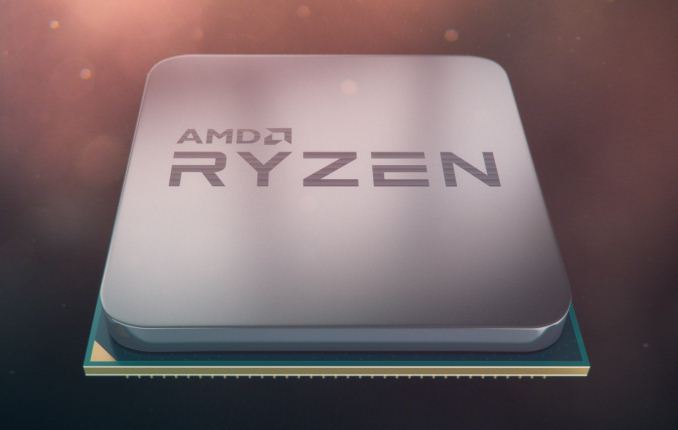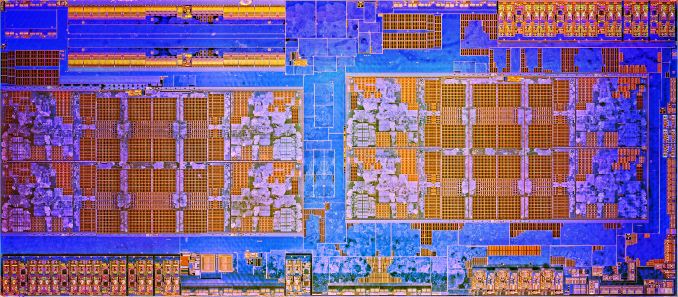AMD Launches Ryzen: 52% More IPC, Eight Cores for Under $330, Pre-order Today, On Sale March 2nd
by Ian Cutress on February 22, 2017 9:00 AM EST
The biggest x86 launch for AMD in five years is today: Ryzen is here. As always before a major launch, AMD gives a ‘Tech Day’ for relevant press and analysts, and through this event AMD’s CEO, Dr. Lisa Su lifted the lid on one of the most anticipated products in the semiconductor industry. AMD knows how to control the level of enthusiasm for its fans, and today is the end result, with processors going on pre-order from major retailers today at 1pm EST, ready for a general hard launch on March 2nd.
In a similar vein to launches of recent smartphones, AMD is doing a staggered announcement/launch with the products on their new microarchitecture. Where Samsung/Apple might give all the details for a product a few weeks before it’s available to buy, today on February 22nd marks the day where AMD is giving consumers information about Ryzen, and specifically the Ryzen 7 family of eight-core products. All the information today is from AMD, and AMD’s internal testing, and pre-orders also start from today for users ready to put down their money for a launch day part. Reviews of the CPUs, as well as when the CPUs will ship to customers, is on March 2nd. This also happens to be right in the middle of two annual shows, Game Developer Conference (GDC) and Mobile World Congress (MWC), making the time between receiving pre-launch samples and being able to provide independent verification of AMD’s performance claims relatively frantic. We’ll do our best!
The Ryzen Family
With a new processor launch, naming the parts and positioning them within the market is critical. So with Ryzen, the processor stack will be split into three based on performance and price: Ryzen 7 at the high end, Ryzen 5 in the middle, and Ryzen 3 for more price-conscious consumers. Both Ryzen 5 and Ryzen 3 are set to be launched later, and Ryzen 7 is the first portion of the family to be released.
Ryzen 7 will have three CPUs to start, all having eight cores and supporting simultaneous multi-threading:
- Ryzen 7 1800X: 8C/16T, 3.6 GHz base, 4.0 GHz turbo, 95W, $499
- Ryzen 7 1700X: 8C/16T, 3.4 GHz base, 3.8 GHz turbo, 95W, $399
- Ryzen 7 1700: 8C/16T, 3.0 GHz base, 3.7 GHz turbo, $329
Ryzen 7 1800X will be the high-end part, featuring a base clock of 3.6 GHz and a turbo of 4.0 GHz, within a TDP of 95W, and for $499. Next to this is Ryzen 7 1700X, launching at $399, with a base/turbo of 3.4/3.8 GHz. The final part for the launch is the Ryzen 7 1700, providing eight cores and sixteen threads for $329 at 3.0/3.7 GHz frequencies.
Processors will initially be available for pre-order from 185 retailers and OEMs worldwide, either as individual parts or pre-built systems.
What, not 40% IPC? 52% IPC??
Enthusiasts and analysts use the term IPC, or ‘Instructions Per Clock’, as a measure of how much the underlying microarchitecture improves from generation to generation. Two decades ago, a good design on a smaller node could net a healthy double-digit gain, whereas in recent years 5-10% gain has become the norm. When AMD initially announced that the new Zen microarchitecture they were developing was aiming for a 40% IPC gain, despite the low IPC they were starting from, users remained skeptical. AMD rehired Jim Keller to work alongside long-term AMD architect Mike Clark and produce a team with several goals in mind: high-performance x86, simultaneous multithreading, and a product to be relevant in the computing, PC, server and mobile space again. So despite this, 40% IPC always seemed a somewhat lofty goal, because Bulldozer was so underwhelming, and despite this low starting point. For the Ryzen launch today, AMD is stating that the final result of that goal is a 52% gain in IPC.
This is something we will need to test in due course!
The Ryzen Silicon, and the Future
AMD pointed out that the new 8-core silicon design runs 4.8 billion transistors and features 200m of wiring. Through previous announcements we’ve examined parts of the microarchitecture including cache sizes, threading, front-end/back-end design, and so on.
AMD Zen Microarchiture Part 2: Extracting Instruction-Level Parallelism
AMD Gives More Zen Details: Ryzen, 3.4 GHz+, NVMe, Neural Net Prediction, & 25 MHz Boost Steps
AMD’s CEO was keen to point out that this is a from-scratch design for AMD, using the knowledge gained from features developed for previous products but ultimately under the hood it looks like ‘a typical x86 high-performance core’, with AMD-specific features and tweaks. We were told that AMD’s roadmap extends into the multi-year range, so while the focus for 2017 will be on this family of products, back at HQ the next two generations are in various stages of development.
BENCHMARKS PLEASE
So despite the 82+ motherboards going to be available, 19 initial PC system builders moving into 200+ through the first half of 2017, the big question on everyone’s lips is how exactly does it perform?
Well, AMD gave us the following numbers:
AMD's benchmarks showed that the top Ryzen 7 1800X, compared to the 8-core Intel Core i7-6900K, both at out-of-the-box frequencies, gives an identical score on the single threaded test and a +9% in the multi-threaded test. AMD put this down to the way their multi-threading works over the Intel design. Also, the fact that the 1800X is half of the price of the i7-6900K.
In a similar vein, again with the Cinebench 15 multi-threaded test, the Ryzen 7 1700X scores over and above the Core i7-6800K (its price competition) and higher than the Core i7-6900K which costs 2.5 times as much.
We’ll tell you what our benchmarks say, with official retail processors. But you will have to wait until March 2nd. Sorry.





















386 Comments
View All Comments
rev3rsor - Wednesday, February 22, 2017 - link
Intel has mobile quads with configurable TDP down to 35W, if that counts. They also make a desktop quad at 35W (the 6700T iirc, and similar).That said, AMD could make a killing from laptops in the near future. Maybe the biggest barrier would be consumers being unaware, but with the right marketing maybe they'll claw over some market share.
fanofanand - Thursday, February 23, 2017 - link
I have had dozens of conversations with people in my office (anecdotal I know) and none of them are even aware of AMD. That said, none of them have any clue what a CPU does or why Intel is good. If the devices are put together properly they will sell like hot cakes.cocochanel - Wednesday, February 22, 2017 - link
AMD has some Ryzen based APU's rolling out in the second half of 2017. Or so they say. No word yet on mobile versions. But you're right. Intel needs a good kick in the pants.Achaios - Wednesday, February 22, 2017 - link
i7-6900K PASSMARK SINGLE THREADED= 2,176 MARKS (STOCK)i7-4770K PASSMARK SINGLE THREADED= 2,255 MARKS (STOCK)
Cool it down, homies. Ryzen ain't that good after all, and not sure what you are going to do with 8 cores as a gamer.
BrokenCrayons - Wednesday, February 22, 2017 - link
Don't force such a narrow perspective. Not everyone here thinks of their computer as primarily a means to play video games.1_rick - Wednesday, February 22, 2017 - link
" Not everyone here thinks of their computer as primarily a means to play video games."Exactly. This is going to <i>rock</i> for certain kinds of develepment environments, especially if you don't need absolutely-the-fastest single-core speeds.
SQL Server will bring an i5 to its knees[1]. OTOH, with the 6 and 8-core CPUs, you can just stick it in a VM.
[1] Nothing like watching a 4460 where the disk average response time goes into the tens of seconds when you do ANYTHING (including stuff like "open Notepad".)
redmok - Wednesday, February 22, 2017 - link
DX 11 doesn't benefit as much. However, DX12 and Vulkan can and will benefit from multiple cores. "Vulkan is also able to better distribute work amongst multiple CPU cores." from Wikipediacocochanel - Wednesday, February 22, 2017 - link
Not now. In 2-3 years, it's a different story. DX12 and Vulkan will become mainstream API's. DX12 is Windows 10 only and Microsoft is pushing that OS very hard. The upcoming XBox Scorpio will have full 8 cores. And probably will be DX12 only as well. What do you think game developers will do ?medi03 - Wednesday, February 22, 2017 - link
Battlefieldd 1, Overwatch and a bunch of other (modern) games are already capable of using more cores.And I'd happily go with double the cores for a couple of frames less, thank you very much.
Gothmoth - Wednesday, February 22, 2017 - link
get a job kid.. your mommy is probably paying for your gaming system. this is something people with a job are interested in....